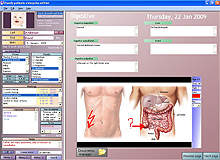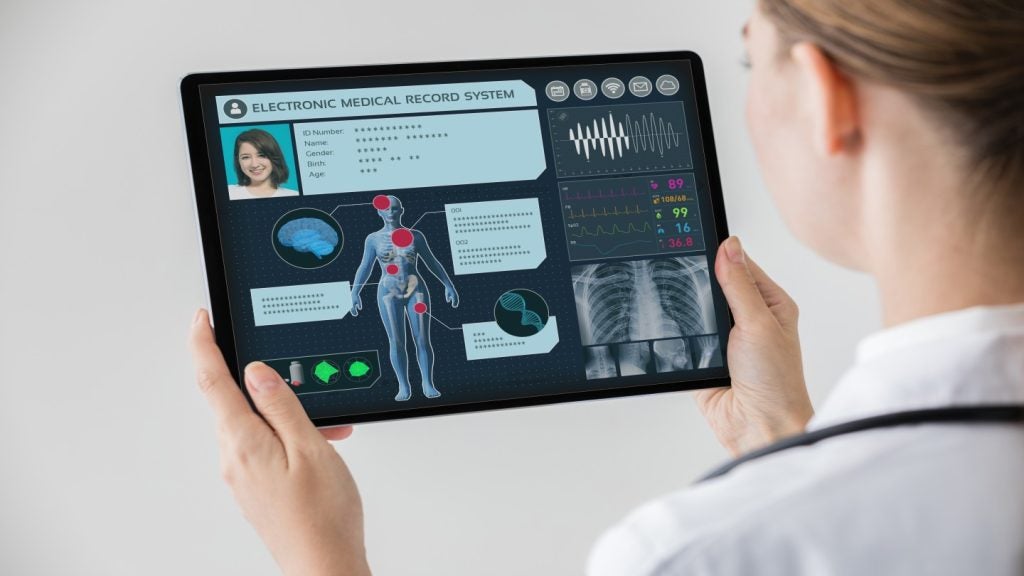
Despite the economic downturn in 2008, the global healthcare IT market has achieved steady long-term growth over the last decade, with revenues increasing from $6bn to over $11bn in 2009 at a compound annual growth rate (CAGR) of 9.5%.
A February 2010 report by GlobalData, Healthcare IT: The Market Poised for Strong Growth in Future, predicted that the market’s strength will increase in the coming years, with an expected CAGR of 12.4% over the next seven years taking the market to a value of $25.6bn by 2016, more than twice the 2009 value. The report details some of the driving factors behind this optimistic outlook.
Public and private stimulus programmes
In China and Europe, the report predicts that government-led stimulus programmes will boost the demand for healthcare IT.
China is dedicating around $2bn of its $124bn healthcare stimulus package to improve healthcare IT infrastructure for 2009-11, with projects to establish regional healthcare information telecommunication networks and data centres planned for the future.
See Also:
France has also implemented a bold healthcare IT stimulus programme. The French Government is investing $2.2bn in healthcare IT, coordinated by the newly formed Agency for Shared Information Systems in Healthcare. The main thrust for the agency will be to re-launch the Dossier Médical Personnel, a shared electronic medical record (EMR).
How well do you really know your competitors?
Access the most comprehensive Company Profiles on the market, powered by GlobalData. Save hours of research. Gain competitive edge.

Thank you!
Your download email will arrive shortly
Not ready to buy yet? Download a free sample
We are confident about the unique quality of our Company Profiles. However, we want you to make the most beneficial decision for your business, so we offer a free sample that you can download by submitting the below form
By GlobalDataPrivate initiatives are also expected to encourage the adoption of healthcare IT systems. The report specifically highlights GE Healthcare’s Stimulus Simplicity Program, which aims to increase demand by offering 0% financing with deferred payments from GE Capital. Programmes such as this are designed to make EMR adoption more affordable, which is an ongoing issue in the healthcare IT sector.
The US market and the ARRA incentive
In the US, the report points to 2009’s American Recovery and Reinvestment Act (ARRA) as a significant piece of legislation for the healthcare IT market. The economic stimulus package laid out in the ARRA promises $35bn to the healthcare IT sector, which is expected to prompt an upsurge in health information technology (HIT) systems among hospitals and primary care physicians.
Under the terms of the ARRA, hospitals and physicians will receive incentive payments for implementing HIT projects. Eligibility requirements for these payments include using certified EMRs, compliance with security and privacy regulations, e-prescribing and implementing electronic order entry and tracking. The highest levels of compensation ($44,000) will go to medical centres that fulfil these criteria by the end of 2012 and no incentive payments will be made if hospitals implement HIT after 2015. It therefore seems likely that hospitals and physicians will instigate projects quickly to maximise financial compensation.
Starting in 2015, practices that have been deemed not ‘meaningful users’ of EMR will incur a non-compliance penalty that begins at a 1% reduction in the Medicare fee schedule for 2015, rising by 1% a year up to 3% in 2017. These penalties, added to ARRA’s financial incentives for making HIT upgrades, will create an advantageous operating climate for reputable hospital IT providers.
Growth fuels more growth
GlobalData’s report also attributes future growth in the healthcare IT market to the increased awareness and adoption that has already spread throughout medical centres. Demand will experience a ‘snowball effect’ as these technologies become less of an unknown quantity for hospitals and reliable evidence builds up to support their effectiveness.
And evidence for healthcare IT growth is impressive, especially in the US. The number of US physicians using e-prescriptions has more than doubled from 36,000 in 2007 to 74,000 in 2008. In October 2009, pharmacy chain Walgreens reported reaching four million e-prescriptions issued for the month, a 200% increase on October 2008. This growth is likely to expand if the US Drug Enforcement Agency allows controlled substances (15% of all medications prescribed) to be issued by e-prescription, for which the retail pharmacy industry is lobbying.
Reducing complexity and all-in-one services
Software as a Service (SaaS) is also expected to have a positive effect on the growth of the healthcare IT market, as it is a more enticing financial and operational prospect for healthcare organisations. SaaS allows hospitals to pay IT providers a contract fee for the provision of web-based applications rather than simply buying and installing software and hardware.
This system brings with it a number of benefits. Primarily, it eliminates maintenance and operating costs and dramatically reduces up-front expenditure when compared to buying traditional systems. Healthcare organisations can also customise the applications that they contract to service individual needs, which can then be improved upgrades and new releases. The development of sophisticated web-based technologies is continually making healthcare IT a cheaper and less complex proposition.
Reducing IT complexity is a priority for medical centres looking to implement or upgrade HIT systems. The report expects that companies that are able to provide integrated products across the entire healthcare IT spectrum will be best-placed to take advantage of increased demand.
HIT providers that can single-handedly supply systems as varied as picture archiving and communication systems, radiology information systems, pharmacy information systems, EMR, practice management and computerised physician order entry are likely to flourish.
The industry’s emphasis on providing comprehensive HIT services is also fuelling strong mergers and acquisitions activity. From 2008 to the end of Q3 2009 there were 112 mergers and acquisitions associated with the global healthcare IT market. This was partly fuelled by the low share prices of HIT companies in the wake of the global downturn, but mergers and acquisitions have remained high despite several years of economic recovery as companies look to position themselves to capture business from the increase in HIT demand.
The report expects that industry will continue to consolidate in 2010 and beyond to gradually reverse the fragmented nature of the current healthcare IT landscape.







